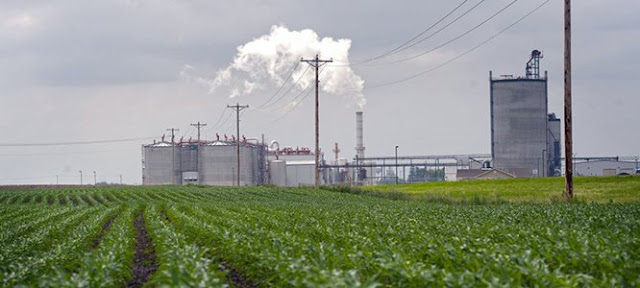Advantages & Disadvantages of Fuel Ethanol
Advantages:
- The exhaust of ethanol is much cleaner and burns cleaner.
- Using ethanol-blended fuels such as E85 (85% ethanol, 15%
gasoline) can reduce net greenhouse gas emissions by 37.1%. This is a
significant amount.
- Positive energy balance - can vary from 1.24 to 8 depending on
the stock type of raw material. Energy production during production is above input. (Controversial)
- Any plant can be used to produce bio-ethanol. You only need to
include sugar and starch. The best choice is sugarcane, but potatoes,
barley, wheat, etc. can also be used.
- It is carbon
neutral. That is, the carbon dioxide released from the bioethanol the production process is the same amount as the previously absorbed crops
during photosynthesis.
- Ethanol-blended fuels such as E10 (10% ethanol, 90% gasoline)
reduce greenhouse gases by up to 3.9%.
- The net effect of using ethanol leads to an overall reduction in
ozone formation, an important environmental problem. (Exhaust Gases
produced by ethanol combustion are less likely to form damaged ozone
because they are less responsive to sunlight than those produced by
burning gasoline.
Disadvantages:
- Biodiversity - Many cultivated lands are needed to grow crops.
This allows you to see the natural habitat destroyed, including the
rainforest.
- Food Fuel Controversy - There is a concern that the favorable
price of bioethanol may cause some farmers to raise food prices around the
world at the cost of food crops to produce biofuels.
- Carbon Emissions - There is a debate about the neutrality of
bioethanol when all factors are taken into account, including land-use
changes in the region, transportation and the cost of combustion of crops.
- In the
production of bioethanol, a huge amount of carbon dioxide is emitted,
resulting in a zero ecological effect.
- Ethanol
production is filled with greenhouse gases (GHG). It is similar to the emissions
of internal combustion engines.
Read more about fuel ethanol
plant.




Comments
Post a Comment